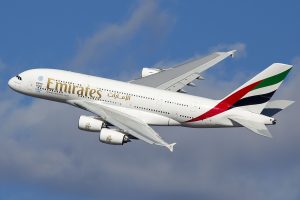 Two of Airbus’s most prolific modern jets are being stripped for parts. A German investment company recently confirmed plans to strip two A380 jets so that engineers can recover and salvage the parts, which is expected to net about $200 million (for both jets). Considering that the A380 is a relatively new jet, though, many people are wondering what prompted this decision. Was the A380 selling poorly enough that the only option was to strip the two jets for parts?
Two of Airbus’s most prolific modern jets are being stripped for parts. A German investment company recently confirmed plans to strip two A380 jets so that engineers can recover and salvage the parts, which is expected to net about $200 million (for both jets). Considering that the A380 is a relatively new jet, though, many people are wondering what prompted this decision. Was the A380 selling poorly enough that the only option was to strip the two jets for parts?
The German investment company Dr Peters Group says the decision to strip down the two A380 jets for parts comes from the fact that it hasn’t been able to find an airline that wants the jets in their fleet. Previously, Singapore Airlines — the world’s 15th largest airline based on revenue — used the double-deck, wide-body jet in its fleet. In fact, Singapore Airlines was the first airline to feature the A380. In recent months, though, Singapore Airlines announced plans to phase out the A380 from its fleet. It even went to far as to return two of the A380, which are now being stripped for parts by Dr Peters Group.
Originally introduced in October 2007 with Singapore Airlines, the Airbus A380 is the world’s largest commercial jet. It supports up to 544 passengers and has 40% more cabin space than the next largest jet, the Boeing 747-8. As indicated from low demand, though, larger space doesn’t necessarily translate into more sales. Even with strong reviews, Airbus has struggled to sell the A380.
“After extensive as well as intensive negotiations with various airlines such as British Airways, HiFly and IranAir, Dr Peters Group has decided to sell the aircraft components and will recommend this approach to its investors,” said the investment company in an interview with Reuters.
When Airbus first launched the A380, it touted the new jet’s high level of customization, allowing airlines to choose their own modular components for the jet. However, this customization doesn’t come without cost — and the cost isn’t cheap. Sources say that customizing the A380 costs airlines an additional $40 million. Considering that the A380 already costs nearly a half-billion dollars, many airlines simply aren’t willing to pay for it.
This doesn’t necessarily mean that A380 will retire for good. As of now, only two units have been returned. Perhaps Airbus will reconfigure the A380 so that it’s more appealing to airlines.



